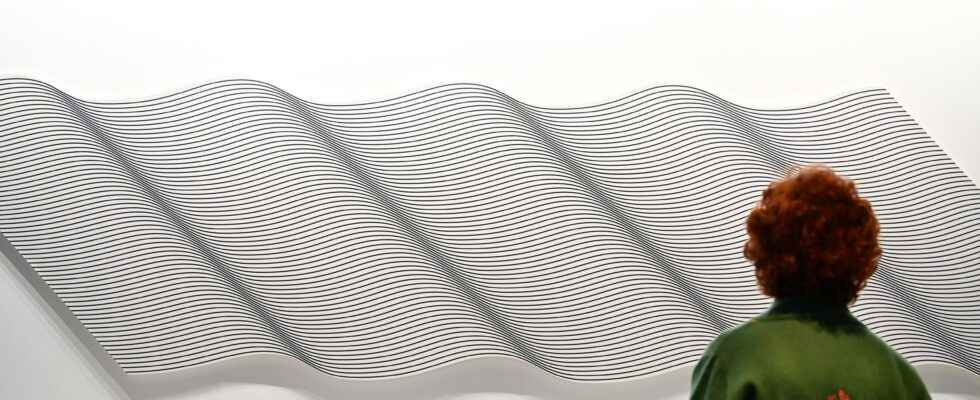If the beauty of fine books is subject to controversy, they have in common that they are heavy, and this one is no exception to the rule. Realizing the weight of the object that had just been offered to us, overwhelmed by the idea of lugging it around for two hours, Dora looked at me unhappily, imploringly… Neither one nor two, I took out the weighed the work out of his bag and went to hand it over to the donor, promising to pick it up when we returned from our walk. Which we obviously didn’t do, exhausted by the three-hour walk, from art gallery to art gallery. And that’s how some books have a story. The happy ending is that it’s there, on my table, stiff, canvas cover, and, in black letters engraved on a gray background:
DELAY
OF THE
OF THE
OF
D
Graphic designer fad? No author’s name, no publisher, not even sure if it’s the title of the book, and even less sure to understand what this delay or this delay means. I open. I turn one, then two double pages, they form a silent introduction, as if to indicate the primacy of the image. I turn again and there, at the very top left of page 7, writes small, sticking to the ceiling:
Philippe Decrauzat
DELAY
And at the very bottom, as if to leave the page with the maximum reflective whiteness, the name of the publishers: Verlag der Buchhandlung Walther und Franz König.
A sensational work of art
Here is the first monograph of this contemporary artist, painter, video artist, born in Switzerland in 1974, whom institutional laziness classifies as kinetic or pop artists. Seriousness reminds us that painters, whatever they say, are all illusionists. The question being to know where they place the words which make vibrate, mentally vibrate their effects of light and form.
The square canvases of one meter on a side reproduced at the beginning of the book are Slow motion, produced between 2013 and 2020. What is slowed down or delayed springs into consciousness as soon as the title is announced: these are strips of acrylic paint that gradually, imperceptibly change from one color (yellow, red, blue, whatever ) to black, or white. They produce an undeniable effect of slowness. The stroke of 24 images/second is supplanted by billions of microns per meter. Cheer. As long as it’s not pixels, it’s still paint.
I don’t have enough space here to say all the reasons why this book is also a sensational work of art; after the Slow motionthe series that presents itself is called Mae West. Bob Nickas, intransigent and rebellious curator, teaches us why and how the American actress, the first sex symbol in history, inspired Philippe Decrauzat to create this series of undulating canvases measuring approximately 2 meters by 2, with black lines, painted in acrylic. It reminds us that Mae West was also the name of the vest worn by American airmen during the Second World War. The connection is then obvious between the beautiful curved shoulders of Decrauzat’s languid paintings and what the actress meant by the homage that the airmen paid her by putting on their vests before getting into their zinc: “A little femininity with the guys who fly by night,” she hoped.
And everything is like that. Between Mae West’s military-Hollywood saucy and Decrauzat’s geometric abstraction, between the verticality of its waves and the retinal depths they test, it’s a quantum leap each time. Don’t ask me to explain to you how this leap is quantum. After the semantic shift and the Copernican revolution, literature took hold of the quantum leap which, why deny it, corresponds well to the effect produced by the undulatory or rectilinear works of Decrauzat, reproduced throughout the 448 pages of this book as beautiful as winter.
